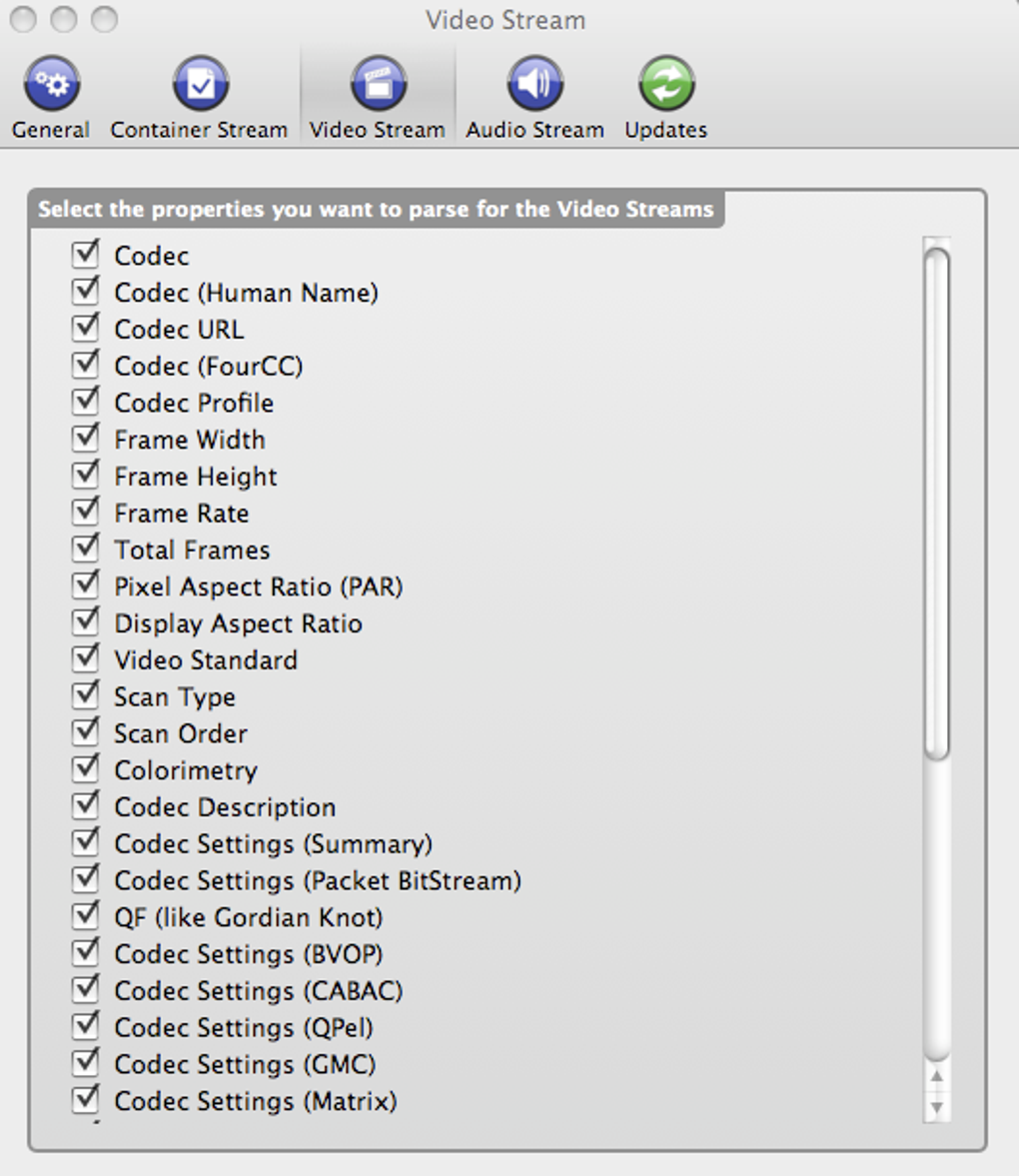
- APP MAC MEDIAINFO FOR FREE
- APP MAC MEDIAINFO HOW TO
- APP MAC MEDIAINFO PRO
- APP MAC MEDIAINFO TV
- APP MAC MEDIAINFO FREE
If you use a video editor that does not support VFR footage satisfactorily, you can always transcode to a CFR format first. With a capable app like iMovie for macOS but which no longer offers this setting in the UI, you can do it using a workaround as explained in this article.


Adobe Premiere Pro CC, Apple Final Cut Pro) while creating a project manually, before dragging the first clip. Some apps capable of this have us set the desired framerate via the user interface/UI (i.e.
60 exact (only for gaming, not for traditional on-air broadcast). ≈59.94 which is actually a rounded number from the result of 60/1.001 (not recommended for final delivery unless you are covering sports or video gaming) (for broadcast television in ex-NTSC regions). 50 exact (not recommended for final delivery unless you are covering sports or video gaming) (for television broadcast in ex-PAL regions, especially for sports channels). 30 exact (not standard since before 1953). ≈29.97 which is actually a rounded number from the result of 30/1.001 (for television broadcast in ex-NTSC regions or for the web). 25 exact (for television broadcast in ex-PAL regions or for the web). 24 exact (for DCI film projection or for the web). ≈23.976 (aka ≈23.98) which is actually a rounded number from the result of 24/1.001 (for television in ex-NTSC regions or for the web). Some examples of those final desired distribution framerates include: The recorded material is later conformed to a desired framerate at CFR after manually setting a project in a compatible editor before adding the first clip to the timeline. The recording actually varies continually (based upon the complexity or simplicity of a scene) both above and below the target to save bandwidth. When we set a framerate in an app like the renowned FiLMiC Pro, for example: 24, 25 or 30 (see screenshot above), they are actually just targets and we should interpret the menu to be saying ≈24, ≈25 or ≈30. I’ll also cover other uses of the term Invisor.Īs I have covered in several past articles, video recording in mobile phones and tablets is not the common CFR (constant framerate) found in camcorders and traditional TV studios, but VFR (variable framerate).
Ahead I’ll go into more detail about the Invisor paid version, the free version and a competitor which is multiplatform. In the case of VFR, Invisor shows the minimum and maximum framerate too. In all cases, Invisor shows the target framerate. Today I am going to share a brief review about Invisor, the tool I currently use to evaluate video files to determine many technical details, including whether that video file was recorded as VFR or CFR.

I have also written about how to conform VFR files to CFR properly in video editing apps.
You can download it for free from its official website here.I have written a fair amount about about the differences about VFR (variable framerate) used with most Android, iOS and iPadOS recording apps (and with streaming), versus CFR (constant framerate) in standard camcorders and TV studios. MediaInfo is available for Windows, Mac, Android, iOS, Solaris and many Linux and BSD distributions. Subtitles: CEA-608, CEA-708, DTVCC, SCTE-20, SCTE-128, ATSC/53, CDP, DVB Subtitle, Teletext, SRT, SSA, ASS, SAMI….
 Audio: MPEG Audio (including MP3), AC3, DTS, AAC, Dolby E, AES3, FLAC…. Tags: Id3v1, Id3v2, Vorbis comments, APE tags…. Container: MPEG-4, QuickTime, Matroska, AVI, MPEG-PS (including unprotected DVD), MPEG-TS (including unprotected Blu-ray), MXF, GXF, LXF, WMV, FLV, Real…. Chapters: count of chapters, list of chapters…. Text: format, codec id, language of subtitle…. Audio: format, codec id, sample rate, channels, bit depth, language, bit rate…. Video: format, codec id, aspect, frame rate, bit rate, color space, chroma subsampling, bit depth, scan type, scan order…. Container: format, profile, commercial name of the format, duration, overall bit rate, writing application and library, title, author, director, album, track number, date, duration…. MediaInfo is a free, cross-platform and open-source program that displays technical information about media files, video and audio files.
Audio: MPEG Audio (including MP3), AC3, DTS, AAC, Dolby E, AES3, FLAC…. Tags: Id3v1, Id3v2, Vorbis comments, APE tags…. Container: MPEG-4, QuickTime, Matroska, AVI, MPEG-PS (including unprotected DVD), MPEG-TS (including unprotected Blu-ray), MXF, GXF, LXF, WMV, FLV, Real…. Chapters: count of chapters, list of chapters…. Text: format, codec id, language of subtitle…. Audio: format, codec id, sample rate, channels, bit depth, language, bit rate…. Video: format, codec id, aspect, frame rate, bit rate, color space, chroma subsampling, bit depth, scan type, scan order…. Container: format, profile, commercial name of the format, duration, overall bit rate, writing application and library, title, author, director, album, track number, date, duration…. MediaInfo is a free, cross-platform and open-source program that displays technical information about media files, video and audio files.








 0 kommentar(er)
0 kommentar(er)
